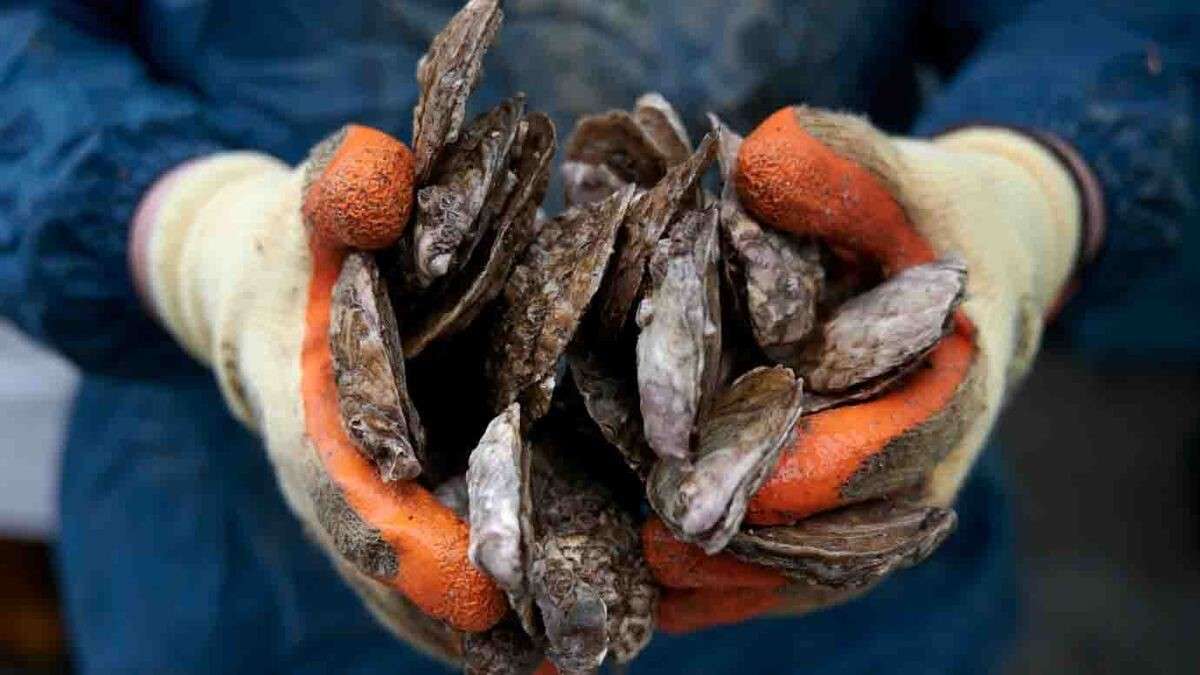Marine scientists at Heriot-Watt University working hand-in-glove with an extensive team of volunteers have successfully reintroduced a further 16,000 oysters into the Firth of Forth as part of an ambitious restoration project. European flat oysters were once abundant in the estuary but were fished out of existence around 100 years ago. Now, the marine conservation project, Restoration Forth, is aiming to deposit 30,000 of the sea creatures back into the Forth to create a new oyster reef, providing a vital habitat for many other species including fish, crabs, sea snails and sponges.
Recently, 220 volunteers have participated in a series of oyster cleaning events, including at Heriot-Watt’s Edinburgh campus, where dirt was carefully removed to help prevent the spread of unwanted hitchhikers, non-native to the Forth. In addition, volunteers ‘glued’ many of the molluscs together using a form of harmless putty to mimic natural oyster clumps and attach these to ropes so scientists can monitor their growth and determine how well they survive in their new home.The oysters have been collected from Little Loch Broom in Ullapool. It is the second batch of young oysters to be released into waterway with the first 4,000 introduced by the project last autumn.
Restoring healthy oyster beds
Research assistant Naomi Kennon from the School of Energy, Geoscience, Infrastructure and Society at Heriot-Watt University, who helped coordinate the volunteers, said: “It’s no exaggeration that without the volunteers giving their time to help with cleaning the oysters, as well as helping set up the monitoring experiments , this project just couldn’t happen. The support received from the community has been incredible; volunteers are so passionate, and have worked so hard to help. It has really been inspiring to see so many people from different walks of life come together to contribute to this project. It takes a lot of hours to process thousands of oysters, so that no damaging hitchhikers or diseases enter the waters unintentionally. As well as cleaning, this year we’ve ‘glued’ many of the oysters using a form of harmless putty to mimic natural oyster clumps and attached many to stings so we can monitor their growth and how well they survive in their new home.”
European flat oysters are important to waters in Scotland, helping to filter water and providing complex habitats. For hundreds of years, the Firth of Forth was home to a massive oyster bed that was roughly the same size as Edinburgh is today and supported local fishing communities. Sadly, this oyster bed and most others around Europe were lost due to overfishing. At its peak in the 1800’s, 30 million oysters were taken from the Firth of Forth each year for a ten-year period to be used for food and exported around Britain and northern Europe.This rate of demand wiped out their populations from our shores in a matter of decades. Projects like Restoration Forth are now working with communities to restore this important species and allow underwater ecosystems to thrive once again. Recent research has suggested that by restoring healthy oyster beds biodiversity could double over ten-years.
Main photo image courtesy of WWF.

